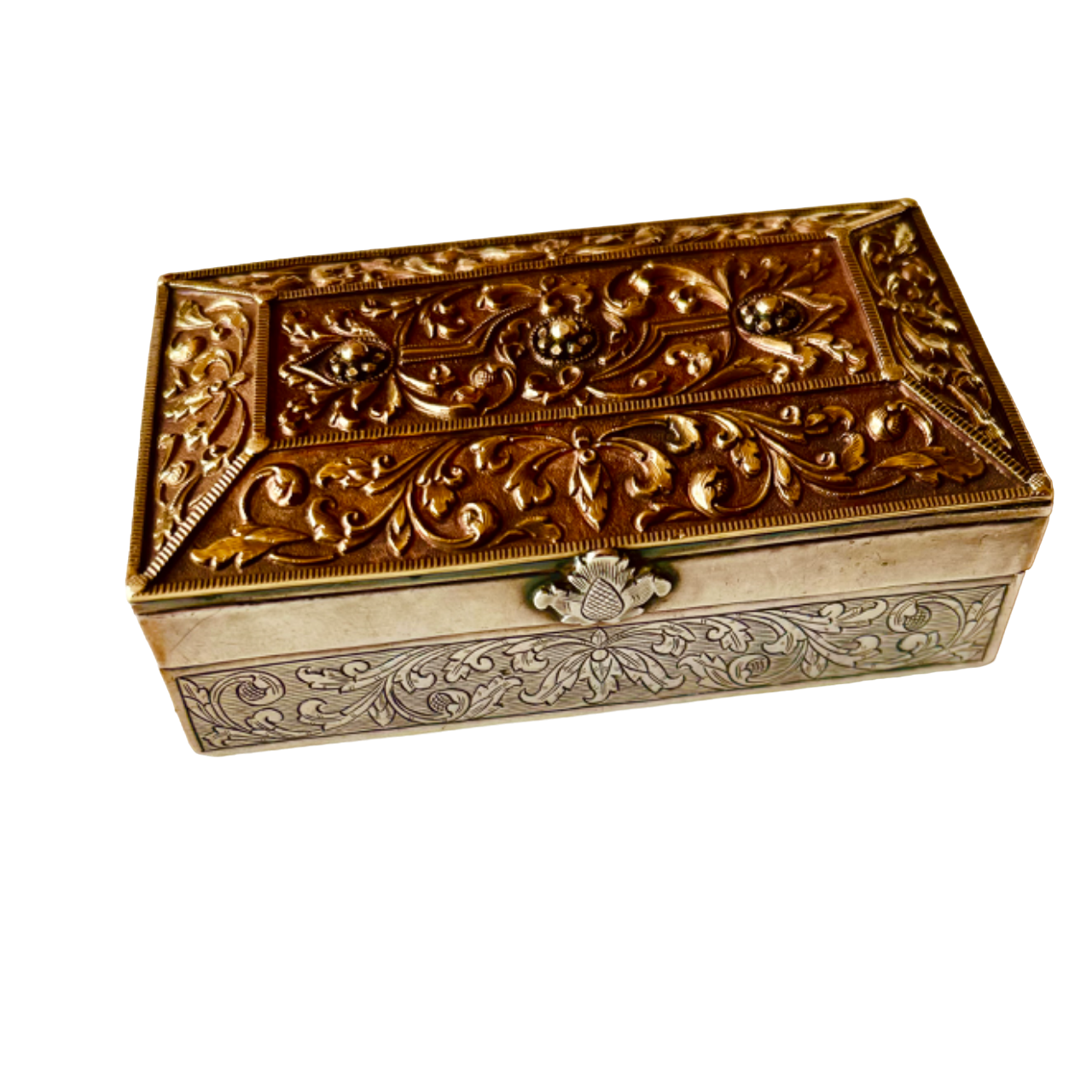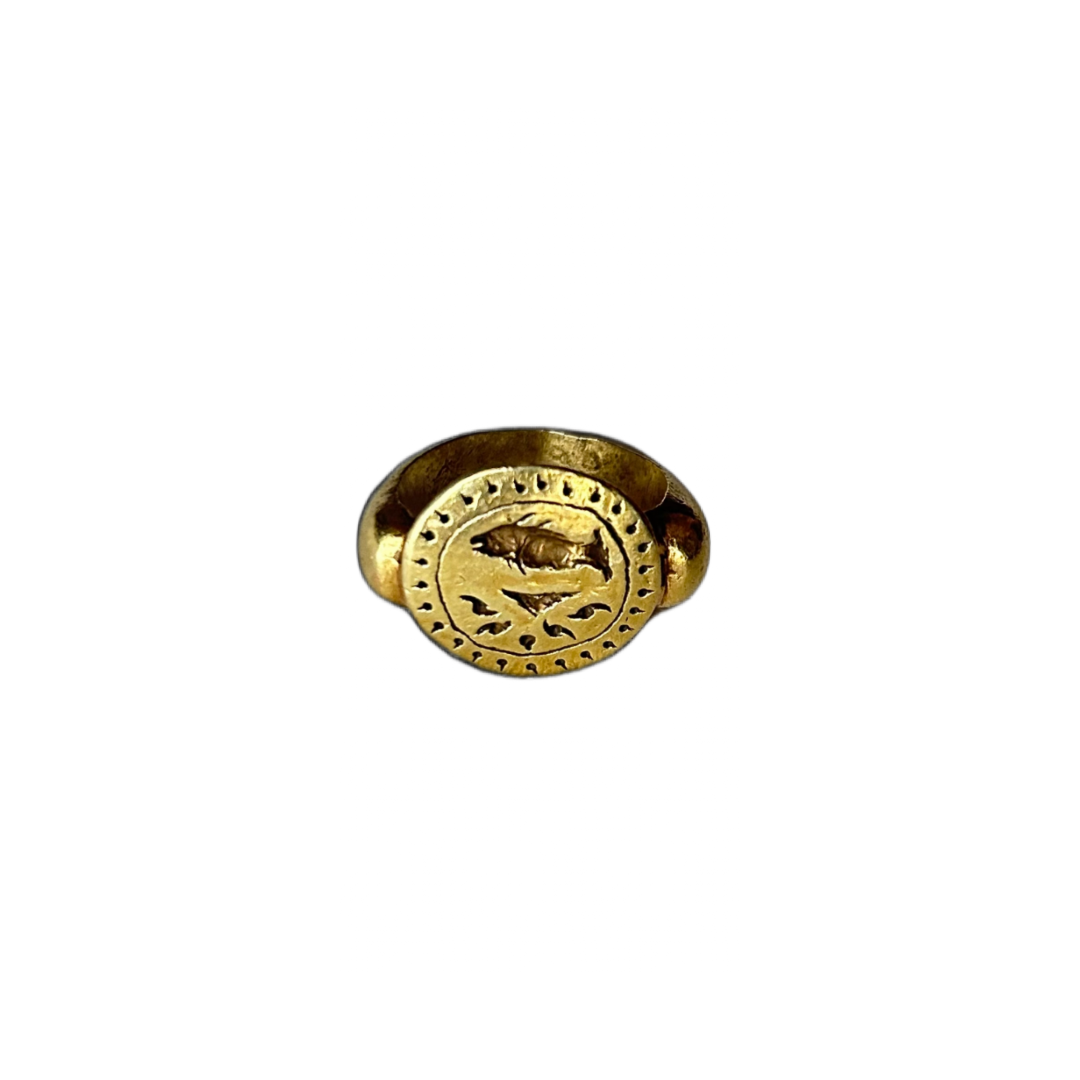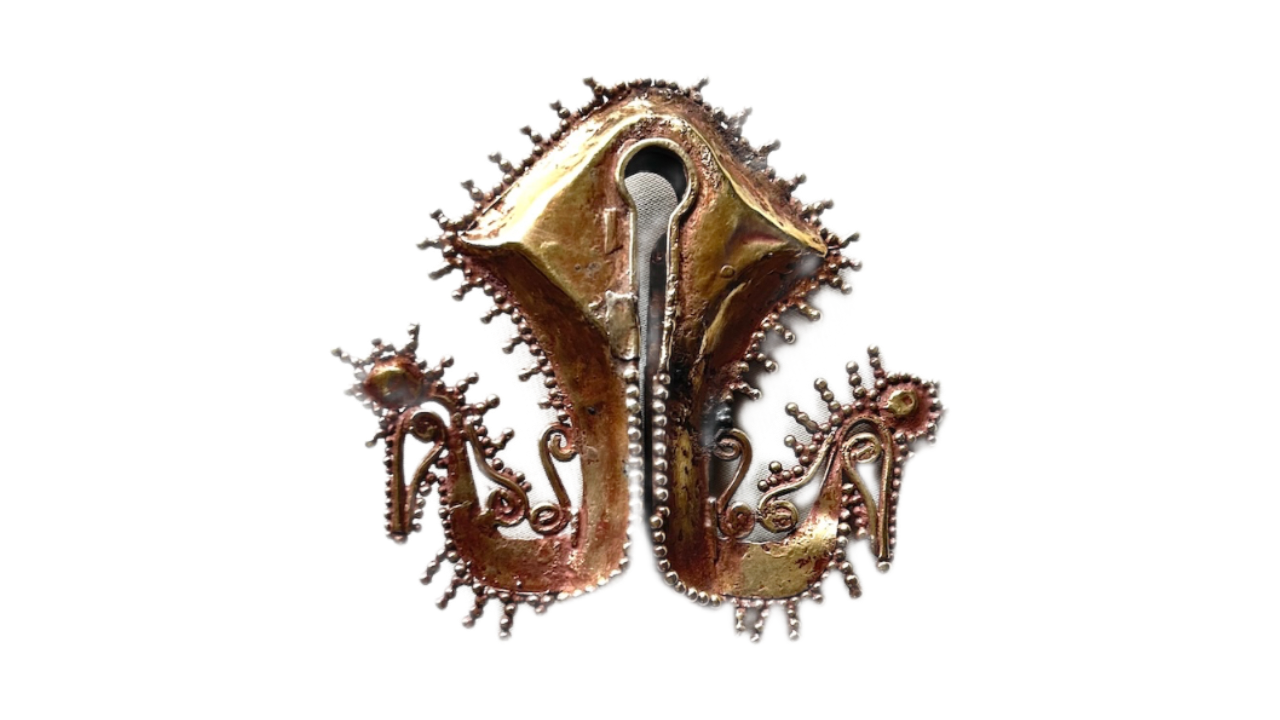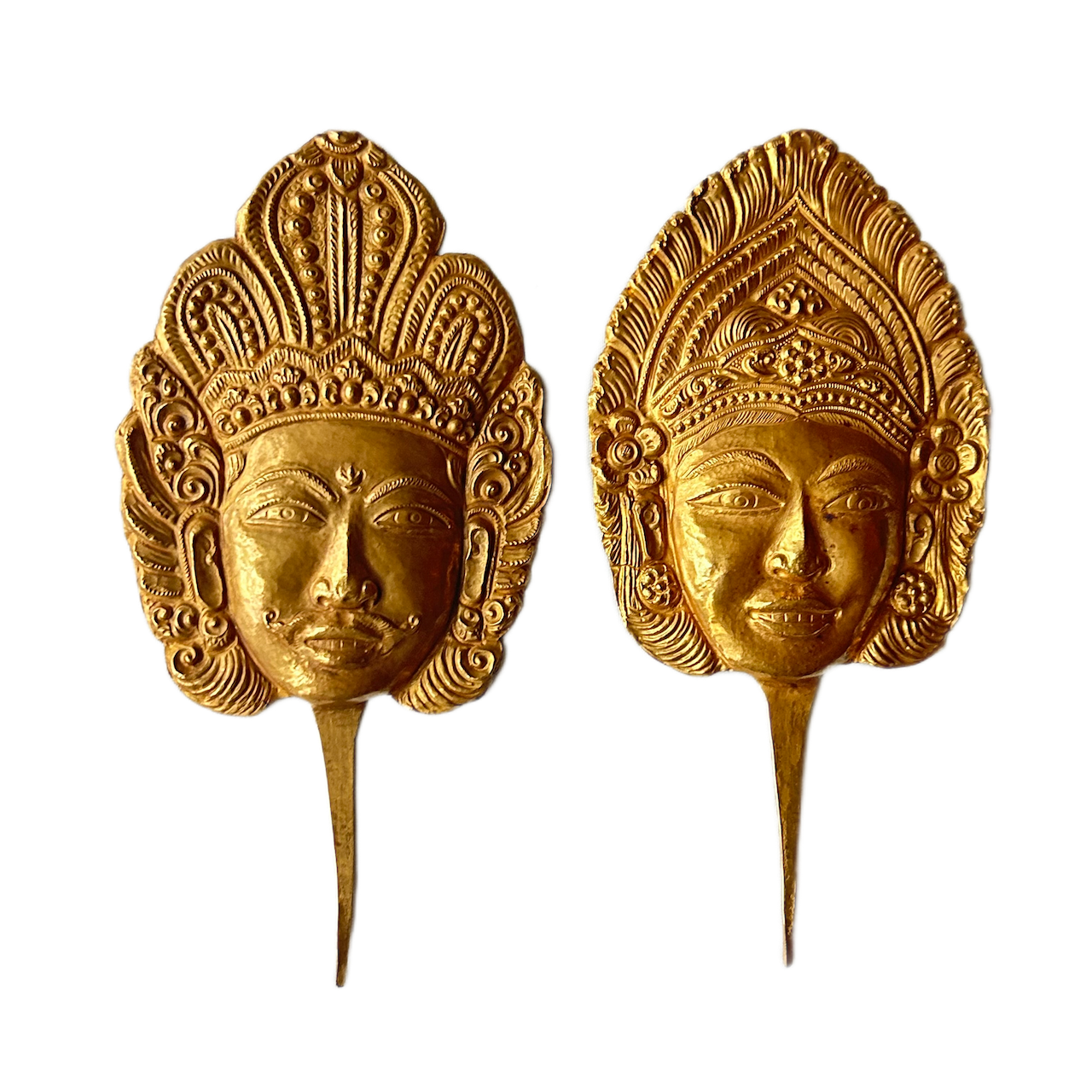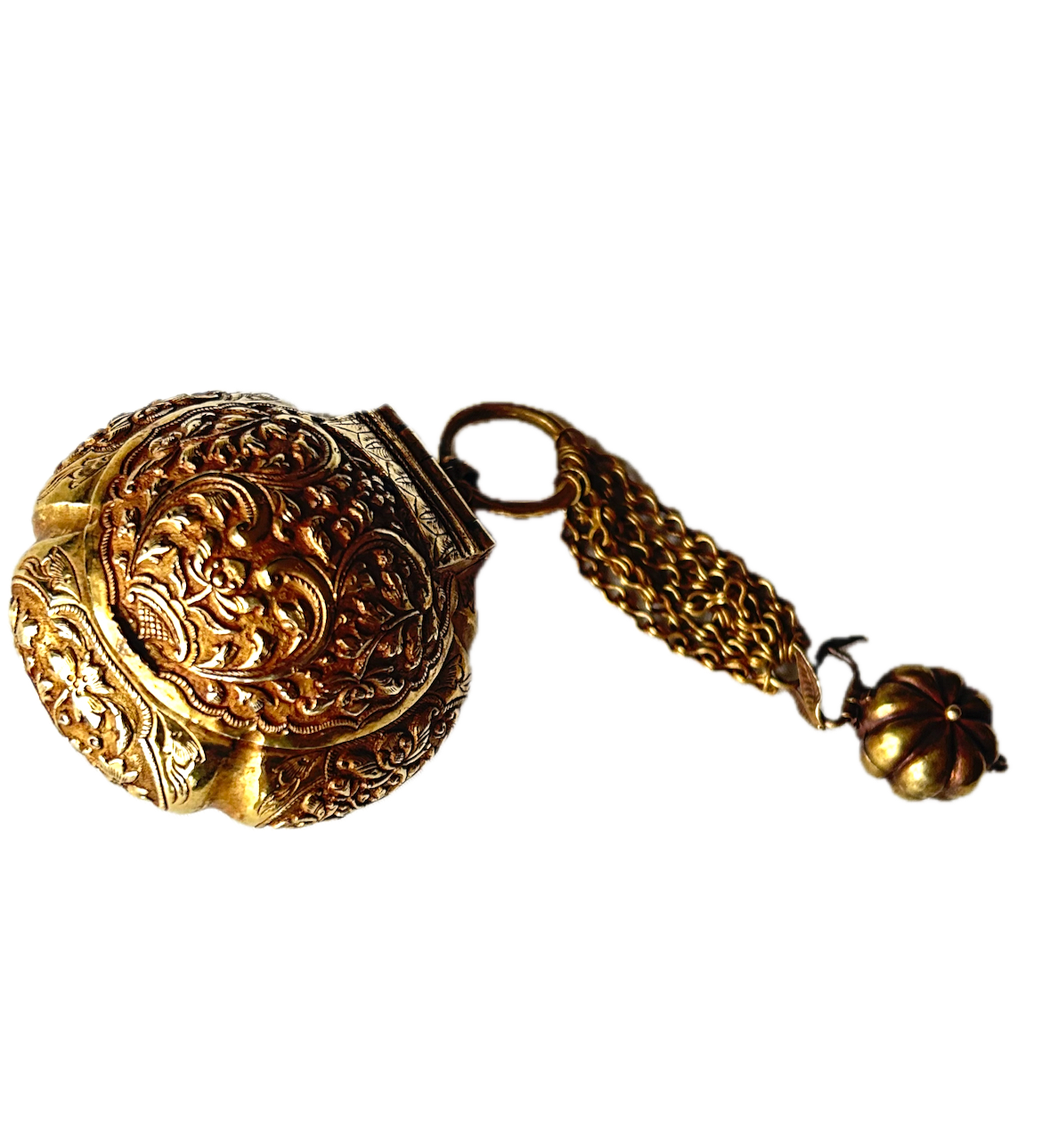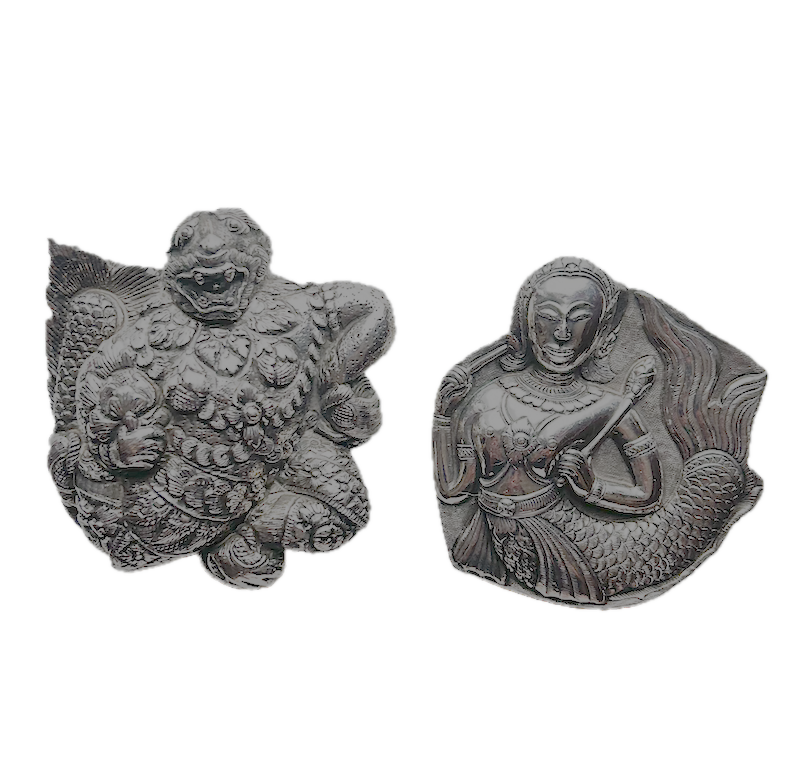The Wonders of Peru
I finally had a huge desire and courage to travel to South America despite many circumstances that have been holding me back all these years. I have heard of Machu Picchu, exotic Indians, the Amazon and their macaws and anacondas, coca leaves, Columbian emeralds, carnivals and most excitingly their gold collection and the infamous conquistadores. Peru was my first destination because I was so curious of their past so I took the challenge to endure the long journey by comparing it with the hardship I experienced during my hike up Mount Kinabalu, the highest mountain in South East Asia.The comparison I had with mount Kinabalu has helped me to understand why some people choose extreme sports, like the saying goes 'no pain no gain' and it has got so much to do with our body and soul.
My plane arrived in Lima after a 30 hours journey which included a short layover in Schipol airport in Amsterdam. The outbound aircraft was packed with Europeans and returning Peruvian travellers. When we touched down in Lima, I was surprised at the simplicity of the airport. It was small and only a few planes were seen on the tarmac which were mostly from the same continent. I was only too happy to be on the ground again after having tolerated the last thirty gruesome hours on board.
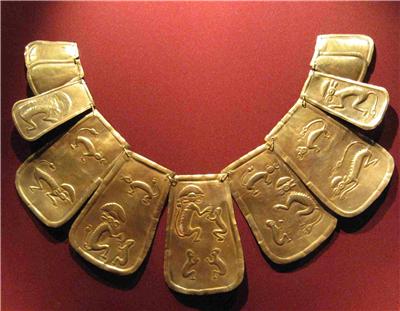
The way through the suburbs was not as welcoming as I thought. The towns looked pretty run down and dimly lit. It was the beginning of the winter season and it was drizzling. Despite the grey and bleak impression it was portraying, my spirit lifted when I got to the hotel in Miraflores. I was so tired that I headed straight for bed after a hot soupy meal in my room. When I opened the window the next morning the unusual rain continued to drizzle. After my hearty breakfast in the coffee shop below, I signed up for a half-day city tour.
I waited in the lobby for the van to picked me up. Once I got into the van our English speaking guide introduced me to the other visitors who were from the other hotels in the city. He briefed us on the itinerary which included Miraflores and San Isidro that are the two principal districts in Lima, a museum of gold collection, the main square of old Lima and an old monastery.

The museum is located in the vault of a former central bank in Lima. The repository consist of tons of fascinating ancient gold ornaments which date back to the Chavin period (1000BC). They belong to Hugo Cohen, a foreigner who had amassed them privately. There are many other
private museums in Peru but pieces of the Inca period, (i.e. the 15th century) are fewer in comparison to the older pieces because many of them have been melted down and carted away as gold bullion rather than something symbolic or artistic in the eyes of the conquistadores.
The monastery is different and unique. Its Moorish influence and the architecture remind me of those in Syria and Morocco.The ceilings are dome shaped with painted images. Most of the paintings on the ceiling and the walls are mostly dedicated to Christianity. In the basement there is a catacomb filled with bones and skulls of the poor whose relatives could not afford a burial plot many centuries ago. I find it a bit eerie and damp down there and I would have certainly freaked out had I been down there all by myself.
At the main square we took the time around the fountain to watch life goes by. The changing of the guards at the parliament house and the music coming from the military band filled the square with triumphant air. After watching the parade which had lasted for 20 minutes I grabbed a cup of coffee and some warm doughnut sticks Churros dusted with sugar from a nearby cafe. Their foreign exchange which to my surprise was not always behind a counter. Mobile men hawked their stakes of different currencies in an outfit which indicated their status as a legal money changer. It was simple and risky with better rates but our guide assured me that they were okay.
Back in the van a visitor told me about a good travel agency in Larco Mar, A three tiered shopping mall with restaurants, cinemas, shops, cafeterias and travel agencies. It has a lovely view of the sea. Further right is the everlasting love park where last year's annual longest kissing competition held on Valentine's day had a record of more than 90 minutes. Phew! The park is popular among youngsters who are eager to show off their skating skills under the busy sky where hang gliders dart about like birds in the air. Across the road that runs along the sea front is the Marriot hotel flanked by a few towers of upmarket apartments. There are many hotel casinos in this part of Miraflores too.
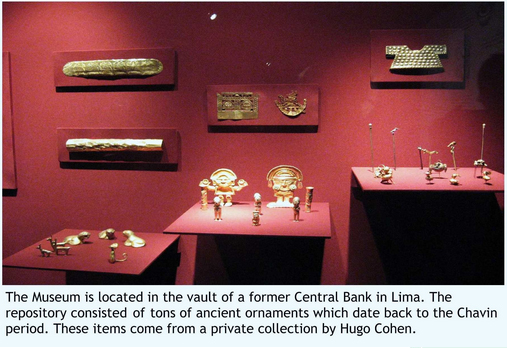
It was nearly 4 pm when I finally found the recommended travel agent in this huge mall. I made arrangement for trips to Chavin and Nasca. Feeling rather tired, hungry and exhausted in this new environment I headed for a bite to eat in a restaurant with an ocean view. I had a paella and four of their national pisco sour cocktails. They lifted my fatigue and anxiety and I realized that I must relax and be laid back during my vacation.
The next morning I took a coach to Chavin towards the northern part of Peru. All passengers were recorded on videos for security reasons. We set off immediately for an 8 hours journey to Huarez, a little town beside Chavin. The bus had comfortable seats and good service on board provided by the bus company, Cruz del sur was very impressive. The music on board wasn't blasting away and good movies were shown simultaneously throughout the trip. We rolled along the scenic coastal motorway which runs parallel to the desert on the other side of the road. The coach climbed and snaked its way up the Cordillere Mountains as we got closer to Huarez.
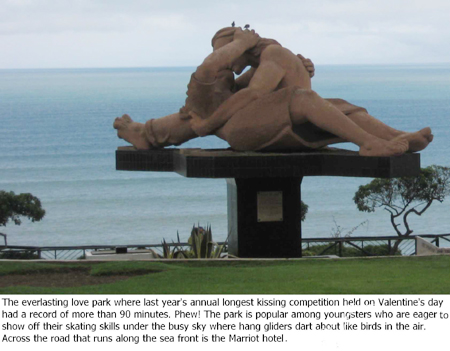
It was getting dark and chilly when I stepped down from the bus. A guy representing some travel company pounced on me with brochures and pictures of hotels around Huarez. Without hesitating I booked a one day trip to Chavin which cost nothing and I followed him to the inn which I have chosen from his photo album. My room was simple and banal, the lock was no good and it unlocked itself in the middle of the night, however I was glad that nothing was taken from my room.
I set my itinerary accordingly to the chronology of ancient Peru. Chavin and its contemporary Cupisnique culture were the oldest in Peru dating back 1000bc.This ceremonial temple known as Chavin de Huanter in the mountains was one of the most important cultures of the pre-Inca time and was the mother culture of Andean civilisation.
The full day trip to Chavin was a winding, uphill 4 hours journey through the mountains. Flora and fauna of a temperate climate in high altitude thrived in this scenic and unexploited land. Llamas in herds of four to six dotted the hillsides randomly. The meat of these beast of burden are also popular besides their useful wool which are good for making ropes and bags for the farms. Softer and finer wool of alpaca and vicuna are used for knitwear in the tourist industry. Like other standard tours to Chavin our bus stopped at a beautiful turquoise lake for pictures.
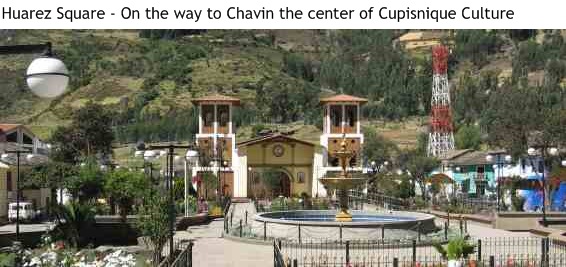
Chavin de Huantar is a ceremonial centre for worshipping numerous deities as well as a trading ground with other regions. It was controlled by the hierarchies within the social system. It was situated on a hill with only a third of the entire stone wall structure left .The head carvings of the temple gate were in good state but it was difficult to picture the underlying story from its abstract stone carvings. Our Spanish speaking guide was eagerly telling interesting histories that I couldn't understand much so I decided to go my own way and I tracked down the damp underground maze that led me to a few separate chambers. It was more interesting and in better shape than what was on the surface. Since I felt lost about joining the wrong tour in Spanish, I just walked back to the bus.
The way back to Huarez the trip seemed longer than I thought even though we were screeching downhill. On the bus I sat beside a chatty and interesting French tourist who had lived in Singapore and she was touring the continent for four months. She talked about places that she had visited in Peru, Brazil and Bolivia which was a good insight. Back in Huarez I bumped into her again outside a restaurant and we continue talking over dinner till I almost missed my night bus back to Lima.
We got to the bus terminal which was located just on the out skirt of Lima at 5 o'clock in the morning. I took a cab to another hotel which was located at the back of the Marriot. It’s convenient location was a stone's throw away from Larco Mar shopping mall. Later in the morning, after a nice shower, a strong instinct told me to double check my bus schedule to Nasca and I was glad that I did that or I would have missed my trip to Nasca.
At 4:30 am a representative from the travel company came to fetch me from my hotel to get to Cruz del Sur terminal where I was in less than 24 hours ago. After going through the same procedure of security measure we departed for Nasca which included two stops in Paracas and Ica. We travelled along the scenic coastal motorway towards the southern part of Peru before arriving there 9 hours later. At the terminal I met up with the agent who was holding a placard with my name on it. We left in a van to a hotel around the corner to pick up a couple before heading off to the airfield nearby. While we waited anxiously for half an hour for our turn to board the four seater cessna plane we watched video clips on the discovery of Nasca and its secrets.
Once we were up in the air, our overly perfumed pilot handed us a map of the desert below us. He circled around to the right and then to the left for half an hour while pointing his finger at every marked desert line motif that corresponded to the map. There was a condor, a spider, the spaceman, a hummingbird, a monkey and some other geometric lines that looked like some graphics I have seen in sci-fi movies. The largest being 50-70 metres long seemed so large from the air. They were so many controversies regarding these mysterious desert lines. Some believed that it was the work of aliens from space but further research by many others claimed that the desert lines were the place of worship created by the Nasca civilisation. Darker colour stones were removed from the desert sand to revealed light yellow lines which made up the motifs. With my anxiety overpowered by the musk perfume of our pilot and the motion sickness that was settling in, I looked forward to land sooner the better because I had a strong urge to throw up in a plastic bag that was provided. I had totally ignored a tipping note that was right under my nose. Back on the ground I had about an hour and a half to have a bite to eat before I dragged myself back onto the bus for a long ride back to Lima. Alas, the round trip took me 21 hours to complete.
The flight to Cusco was slightly over an hour which would have taken 22 hours by bus. I arrived on the day of the festival of the Sun, Inti Raymi, an Inka festival with the objective of a good harvest and to celebrate the beginning of the winter solstice. There was so much talk about it so I immediately rushed to the main square to join the mingling crowd that was following the parade from one spot to another. I could hardly catch a glimpse of the show in the crowded square so I stayed away from the chaos because the high altitude was causing me severe headache. Feeling really exhausted I crept back to my room and slept throug the rest of the day.
Cusco is situated in the south western part of Peru. At 3400metres above sea level, it is one of the highest cities in the world. In ancient Quechua language of the Inkas, Cusco is the' Navel of the universe' .Tiwantinsuya empire of the Inkas conquered the other existing dynasties in 1200ad. The empire expanded from the north covering Ecuador, Colombia and Chile in the south. Its highly elevated location surrounded by high mountain peaks was a favourable defensive site. Rivers, mountain ranges and overland routes converged here. They reaped the benefits, making Cusco the political and religious capital of the Inka Empire. Temples. shrines, royal palaces and plazas were built out of stones in their natural form. Skilled stonemasons stacked mutiple-angle stones by working on their weight and forms to hold an entire wall together at an
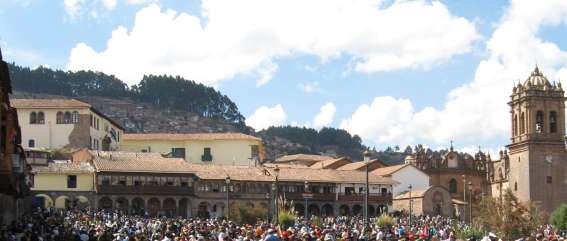
angle of 10 degrees. With the fall of the Inkas to the conquistadores, most palaces and temples were reduced to ruins and their gold plundered. Stones from the destroyed complexes were carted away to the valley below for the building of haciendas and the ruins other than its remaining walls were replaced with cathedrals and other Spanish administrative buildings.
Contemporary Cusco is very touristy and polluted by vehicles mostly catering to tourism. Pizzerias, souvenir shops and tourist offices line every street in every square. Outside my hotel I could see Plaza d'Armes standing at a high point in the heart of the city. Traffic from every direction converge along the gentle slopes towards it. In the evening when night sets in, houses on the hillside surrounding the city light up like a mirror image of the constellation of the stars above. Trees, shrubs, flowers and grass lawns were well kept alongside fountains and cobbled streets. Being a gateway to the sacred valley and Machu Picchu, Cusco is ever flowing with visitors from all over the world. I was quite surprised to come across a group of Thai tourist in a textile shop.
The sky was blue and sunny in Cusco. I was there for a week, coming and going from one place to another visiting Cusco's Inka ruins like Sacayaman, Quenqo and Tambomachay. In the evening I sampled different dishes in some nice and cosy restaurants over a couple of pisco sours. The most expensive dish on the menu was grilled guinea pig which I refused to try even though it was popular among the Peruvians. They were reared for culinary fares. Llama meat was chewy and tough but their creole soup with chopped vegetables and quinoa was delicious and healthy. Most barbecued meat were served with patatas fritas, an indigenous tuber called potatoes with over 500 varieties. Chifas were Chinese restaurants serving food with creole ingredients. I was told that tourists from S. America were spending more days in Lima just to eat in renown places that served cerviche, their popular raw fish salad.
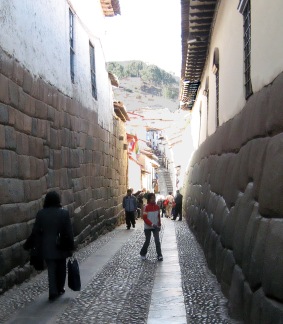
On one occasion after my meal, a lady convinced me to have a body massage by Andean hands. I immediately followed her to be massaged because I felt a very sharp pain on my right shoulder from travelling long hours by bus and from the high altitude which had caused me severe headache. The Andean arms of the young masseuse were firm and rounded. With her stubby fingers she massaged me with the right pressure for over an hour. It was so rejuvenating and it was the best massage that I have ever experienced.
I made arrangement for other trips to the sacred valley, lake Titicaca and Machu Picchu at a tour office in the square. The lady who was running the company advised me to bring very warm clothing to lake Titicaca which she claimed to be cold and windy since it was higher than Cusco. I did not look concern so she gave me a stare which seemed like 'freeze and its none of my business'.
The following day I hopped on the bus for Puno. I slept throughout the whole journey arriving 7 hours later at five in the morning. I looked around for Maria to fetch me as I was told but they was no sign of her. I waited till 6 am in the freezing terminal till she showed up. During the hour I was amused by the other Peruvian travellers who were all wrapped up in colourful thick felt blankets together with their bundles of belongings which reminded me of an exodus. Maria and I took a cab to a nearby hotel where I was left stranded for 2 hours in the lobby. At last a mini bus filled with other visitors of which some had heavy make up and doused with perfume arrived at the door for me. The bus made two more stops before heading towards the quay. It was a bright and sunny morning and the fruit vendors were a little busy with visitors picking up food like oranges, mars bars and water before getting into the boats. Our boat was small and simple with an open deck. They were 25 of us including our friendly English guide and the boat driver. Our guide Jose, explained to us about the floating island, just about an hour away which was our first stop in Lake Titicaca.
The sacred Lake Titicaca is 3800 metres above sea level and it is the highest lake on earth measuring 177 km long and 56 km wide. Half of the lake is in the South eastern part of Peru and the rest of it is in Bolivia.
These floating islands are created by blocks of root and soil sawn from the bottom of the lake from which long straws thrive in abundance. The growing roots are the main support of these permanent tiny islands. Stakes of crisp and succulent straws were used as floor covering and walking on it feels like walking on air. It is amazing that up to 6 families lives on one island of which the complexes are built from the same material. Some older islands that has been around for 30 years are much higher than the water level and they look like a cluster of straw homes in a village. The natives survive mainly on sea marine creatures as their staple diet as well as other sources of income from the sale of souvenirs to visitors.
We then moved on to Amantani island which was a good 3 hours away. Some people were out on the deck enjoying the sun and the wind and those who remained in the cabin just dozed off to the rhythm of the motor of our slow boat to China. On arrival in Amantani, we were greeted by another ethnic group of Peruvians who were clad in traditional clothing for the reception. They lived on the island where they accommodate tourist twice a month and with this extra income they received from room rentals and sales from woolly clothings, they purchased green vegetables and fruits which did not thrived on their land. On top of that there were no electricity nor vehicles on the island. Their way of life was medieval and primitive and they survived on a few home grown crops like maize, quinoa and tubers which were our staple diet too for two days.These floating islands were created by blocks of root and soil sawn from the bottom of the lake from which long straws thrive in abundance. The growing roots were the main support of these permanent tiny islands. Stakes of crisp and succulent straws were strewn about as floor covering .Walking on it feels like walking on air. It is amazing that up to 6 families lives on one island in which the complexes are built from the same material. Some older islands that has been around for 30 years are much higher than the water level and they look like a cluster of straw homes in a village. The natives survive mainly on sea marine creatures as their staple diet as well as other sources of income from the sale of souvenirs to visitors.
We then moved on to Amantani island which was a good 3 hours away. Some people were out on the deck enjoying the sun and the wind and those who remained in the cabin just dozed off to the rhythm of the motor of our slow boat to China. On arrival in Amantani, we were greeted by another ethnic group of Peruvians who were clad in traditional clothing for the reception. They lived on the island where they accommodate tourist twice a month and with this extra income they received from room rentals and sales from woolly clothing’s, they purchased green vegetables and fruits which did not thrived on their land. On top of that there was no electricity nor vehicles on the island. Their way of life was medieval and primitive and they survived on a few home grown crops like maize ,quinoa and tubers which were our staple diet too for two days.
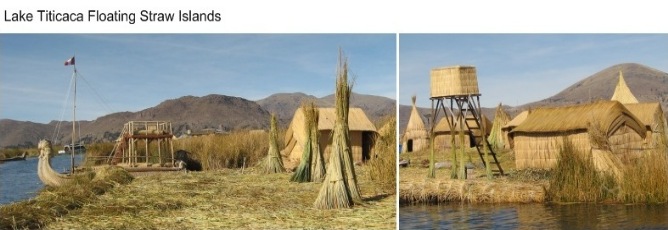
We were divided into several groups of four to six people for a respective family to accommodate us for the night. I was in a small group of three. I said Hi to Marie Therese from Venezuala and to Jose from Columbia.
We followed our host to her home which was situated on a hill slope. As I strutted along I could see other farm houses amongst flowers and crops which dotted the landscape. Domestic animals like chickens and ducks roam about freely pecking at anything that was available.
We got there in time for a pretty late lunch after which we had the option to climb to the summit of the mountain to catch the sunset. Jose was so energetic and keen but the cold and the high altitude was really compressing my body like a squashed empty plastic bottle and all I could think of was to stay in bed. Marie Therese was tired too so she hung out by the shore to see the sunset. We were both awaken by Jose who came back to the room after his adventure which he claimed was freaking cold like -8 degrees but was worth it. I was happy and proud of his courage till he announced that there was a party later on and that we shouldn't miss it. At the back of my mind I just could not think of any fun in this freaking cold weather which was getting worse. We chatted away till someone knocked on the door for us to go down for dinner. As usual dinner was only tubers which I find exotic as they come in all sorts of shapes and textures accompanied with quinoa soup and coca tea. Then our host came in with a varieties of folk clothing for us to wear to the party. We had no choice but to allow her to dress us up. With the heavy and thick clothing we dragged ourselves in the freezing cold weather with the help of a torch light all the way up to the town hall which was already filled with people in traditional costumes dancing away to live folk music. I got there with my foot caked with mud since I had only my roman sandals on throughout Peru and I stepped into a muddy bank as I was crossing the stream. We danced a bit with the natives to three steps waltz and we left after a short while. Back in the room we took turns to use the primitive toilet that was out in the yard below which was dark and without water before we tugged ourselves under thick layers of blanket for a good night rest.
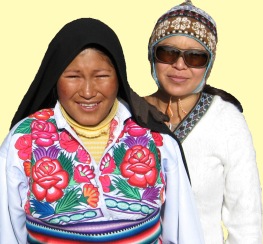
I woke up feeling refreshed and the sky was blue and sunny. I couldn't wait to sailed to Taquila island. On arrival at the quay an hour later we hopped off and strolled along the scenic trail to get to the main square. I was in high spirit and I got there almost before anyone else.
Taquila island is inhabited by another ethnic group whose culture and tradition is very much a part of their daily lives. Their clothing and hats indicate their social status. Men wear woollen conical hats with a pom pom attached to its pointed end .The colour of the pom pom and where it lays on either side of the shoulder indicates their marital status. Women wear a flower in their hair. White ones are for married ones, red for singles and yellow flowers are worn by widowers. This islands is developed with a modern municipal hall, an old church, motels and restaurants in the square which overlooks the beautiful lake. There is a mayor and the community interact with each other daily through small commercial transactions. This peaceful and sacred place has no crime nor vehicles besides pilgrims and visitors who have contributed much to their activities and revenues.
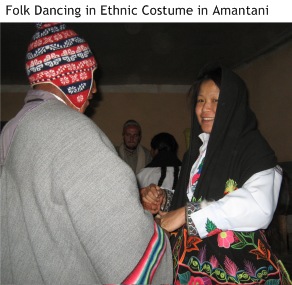
The rooftop restaurant where we had fresh trout from the lake below had a spectacular view of the horizon. It was a memorable lunch set in an environment of turquoise water, clean crisp air with beautiful flowers and vines which reminded me a good and simple wonderful life without being hedonistic and covetous. We then scrambled down across the other side of the hill to catch our boat for a good three hours ride back to Puno. On the open deck of the boat a native was knitting a woollen hat away while I chatted with the other friendly visitors. A woman from Argentina was so kind to massage my painful shoulders. Back in the bus again in Puno, Jose and I were the first people to be dropped off at the bus terminal. Unfortunately it wasn't an express bus to Cusco and I lost count on its endless stops which finally landed us there 9 hours later at 2 am in the morning.
While in Cusco I had two full days to relax before my scheduled departure for Machu Picchu. I joined a one day round trip to the sacred valley which covered 300 km of travelling. On the way to Pisac, featured in Michelle Yeoh's' crouching tiger and hidden dragon' and one of the most popular market in South America known for its souvenirs and its exotic foodstuffs which were carted down by farmers twice a week from villages in the surrounding mountains, we stopped promptly at a high scenic point which overlooked the vast valley below and I captured loads of pictures of this infinite landscape.
The Urubamba river which is their source of life flows across the vast fields in the valley and it carries on winding and weaving its way through the huge national reserve park, meanwhile creating deep gorges and rapids along the way to Machu Picchu. Besides being scenic, it also provides water for the farms and the inhabitants in the region.
Pisac market whose vegetables, fruits and other kind of food stuffs seemed more exotic and colourful spread out before braided vendors in their colourful outfit
I walked around the market for an hour eyeing for interesting merchandise like silver jewellery inlaid with spondyllus shells and other semi-precious stones which were plentiful but I only found myself a cool felt hat and some alpaca knitwear. Looking like a cowgirl from the Pampas I got on the bus with my cumbersome hat that was in the way, so I sat without resting my head on my seat all the way to Ollaytambo and Chinchero of which both were Inka ruins whose sophisticated irrigation networks were still channelling water from the mountains to a sacred fountain in these 600 years old ruins.
By dinner time at 7.pm I was back in Cusco wandering around in shops meanwhile looking out for a place for supper. I stumbled on an antique shop whose owner, Mauro was quick enough to guess my profession. I was shown all kinds of ancient stone beads, pottery, textiles and a few gold ornaments of which were not for sale but I managed to convince him to part with a few pieces. Towards the end of our business chatter, a friendly hairless dog came to greet me by rubbing its body on my legs. I resisted it thinking that it was diseased but to my astonishment, it was a hairless species of pet dogs indigenous to Peru.
Barrack Obama whose daughter is allergic to dog's hair and is promised a pet dog if they live in the white house has been offered a hairless dog by the Peruvians according to BBC world news.
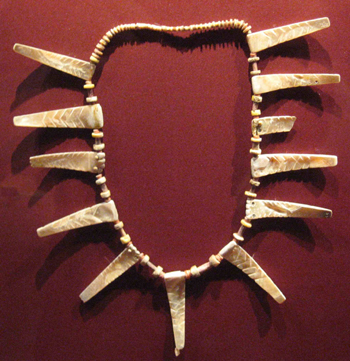
The journey by train which was the only means of transport other than the helicopter to Agua Calientes was a good five hour ride. The locomotive look alike marine blue choo choo train was ever so nostalgic. It zig zag back and forth at the foot of the mountains for about twenty minutes before it started going around it and finally travelled alongside the scenic and rocky Urubamba river all the way to the foot of Machu Picchu 's Agua Calientes. The picturesque train ride across mountains, lakes. meadows and farms was most unforgettable and this experience has not diminished my zest to travel on the mocked up Orient express. It was just simply beautiful.
My designated motel was situated along the railway track where the main principal town was located. There were no other businesses other than pizzerias, hotels, bars and restaurants, grocery, books and souvenir shops in Agua Calientes. On the other side of the railway was a small square with even more cosy and charming eateries lodged on the slope leading to the railway station which was at the summit of the hill.
The next morning before sunrise, I met up with the rest of the people and our guide in the square .After a short briefing on the itinerary of Machu Picchu we got into shuttle buses that were waiting at the bay to ferry us for a twenty minutes ride to the top. Some tracked for an hour to get there. Being certain that no one was left out in the group, we followed the guide to the ruins of Machu Picchu. We were among the first group of people to get there before sunrise.
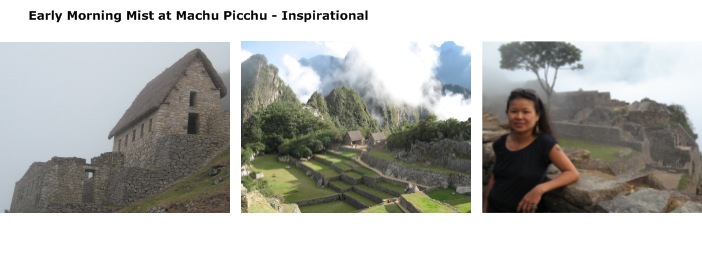
Being only 2000 metres above sea level, the air was bearable. We waited for the heavy mist to clear during sunrise. From a distance I saw a tiny sparkle which slowly developed into a big round rainbow which I have never seen in my life. It was so fascinating.
As the surrounding area got brighter and brighter by the seconds the beautiful view where this sanctuary is located began to unveiled its mysteries and its awesome terraced architecture.
We toured the sanctuary for more than two hours with our experience guide who knew the place by heart. With the option to climb Wayna Picchu, I stood in line for my turn of which my number was 199 of 200 of the first badge. The second badge had to wait for another hour and a half for their turn to scale the summit of 2600metres.
I got to the top with a little effort in about 45 minutes. The entire view of Machu Picchu from this point was spectacular. I perceived that the temple was built in the shape of the condor, one of
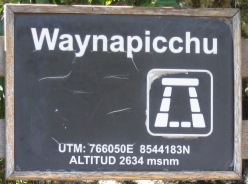
their three magnificent animals depicting heaven, puma for earthly power and alas, the snake representing the underground realm. I continued to scrambled about from rock to rock and sliding backward on my bump with the help of my palms till I reached the highest point just to have my picture taken on top of the world. I felt as free as a bird at the top after which I tracked down the path gingerly to the shuttle buses below. I spent the whole afternoon reading about Machu Picchu and the folk tales of the Inka era. The Inka trail runs about 43 kms and today it is a kind of pilgrimage to hikers from all over the world. Being a national park, most wildlife and habitat that are indigenous to the park are protected from poachers and from extinction. Its a sanctuary to many varieties of wild orchids with over 300 species spreading across the varied terrain in the surrounding high Andes mountains that soar up to 6300m high above sea level where condors could be spotted occasionally flying over the glaciers. Other kinds of birds are abundant especially their national bird, 'The cock of the rock' which is symbolic to the park. The endangered Andean bear and other rare deer are still sighted within the sanctuary of 330 kms. On my return journey by train to Cusco that evening I saw many hikers and porters preparing for their four days hike on the few centuries old Inka trail all the way to Machu Picchu. Porters wore slippers that were made of cut out strips of old tyres. During the Inka time, 'Cheskies' relay runners run from post to post for miles on this trail to deliver messages or even fresh fish from the sea to the king in a matter of hours. The day after tomorrow was my departure to Singapore. At the airport I dreamt of coming back to do the Inka trail and stories of the Amazon related by other travellers also tempted me to return to Peru someday. Apparently they are still many ongoing excavations ,one of which is in the north where the quantity of treasures in the tomb of the Mochica king (200 ad) are equivalent to that of king Thutakhamen's. A film by European producers related to this period with its tomb being the film's setting has been released sometime this year. |
Hasta la vista! Puedo hablar Espanol es mas facil. |


